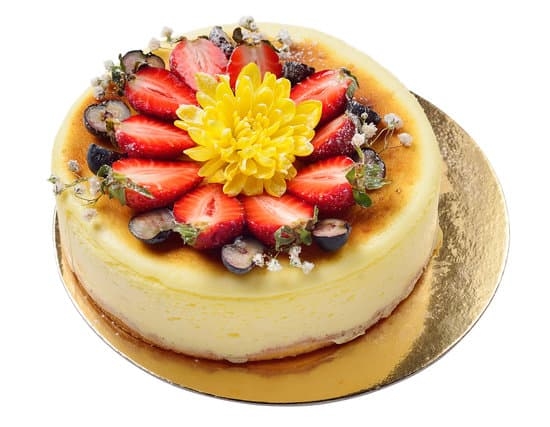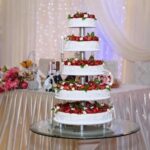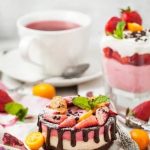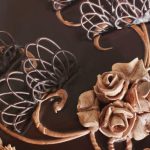Decorating a cake is not only about the visual appeal but also the delicious taste that complements it. The right cream can make all the difference when it comes to achieving that perfect balance. In this article, we will explore how to make cream for cake decorating that will elevate your creations to a whole new level.
Whether you prefer the richness of buttercream, the lightness of whipped cream, the tanginess of cream cheese frosting, or the versatility of fondant, choosing the right type of cream is essential in achieving your desired result. Each type offers a unique texture and flavor profile, allowing you to showcase your creativity in different ways.
To create stunning decorations for your cakes, you’ll need to have a good grasp of the essential ingredients and tools required for making cream. From butter and sugar to food coloring and piping tips, each component plays a crucial role in determining the consistency and appearance of your final product. Stay tuned as we delve into step-by-step instructions on how to whip up delicious and versatile creams for your decorating needs.
Types of Creams for Cake Decorating
When it comes to cake decorating, the type of cream you choose can make a huge difference in the final result. There are several options available to suit different preferences and requirements. Buttercream is a classic choice known for its smooth texture and easy application.
It can be flavored and colored in various ways, making it versatile for different designs. Whipped cream, on the other hand, offers a lighter and fluffier consistency, perfect for those who prefer a less sweet option.
Cream cheese frosting provides a tangy flavor that pairs well with certain types of cakes like carrot or red velvet. Its creamy texture makes it great for piping intricate designs or creating smooth finishes. Fondant is another popular choice for cake decorating, especially for more elaborate designs or sculpted cakes. While fondant may not be as tasty as buttercream or whipped cream, it offers a professional look and allows for detailed decorations.
For those looking to experiment with different creams for cake decorating, it’s essential to consider the flavor profile, consistency, and overall aesthetic of the final product. Understanding how to make cream for cake decorating is key to achieving your desired results, whether you’re going for a rustic homemade look or an elegant professional finish. Experimenting with different types of creams can also help you discover new techniques and styles to elevate your baking skills.
In the world of cake decorating, the possibilities are endless when it comes to choosing the right cream for your creations. Whether you opt for buttercream, whipped cream, cream cheese frosting, or fondant, each type has its own unique characteristics that can enhance the overall appearance and taste of your cakes.
By learning how to make cream specifically tailored to your decorating needs, you’ll be able to unleash your creativity and bring your cake visions to life in deliciously beautiful ways.
Essential Ingredients
When it comes to cake decorating, having the right kind of cream is essential to create beautiful and delicious designs that will wow your guests. Whether you prefer a classic buttercream, a light whipped cream, a tangy cream cheese frosting, or a versatile fondant, each type of cream requires specific ingredients to achieve the perfect consistency and flavor. Here are some key ingredients you will need to make cream for decorating:
- Butter: A crucial component for buttercream frosting, providing richness and flavor.
- Powdered sugar (confectioners’ sugar): Sweetens the cream while also adding stability.
- Heavy cream or whipping cream: Used in whipped cream frostings for a light and airy texture.
- Cream cheese: Adds tanginess and richness to cream cheese frosting.
- Icing sugar (powdered sugar): Often used in combination with other ingredients for various types of frostings.
In addition to these essentials, you may also need flavorings such as vanilla extract, cocoa powder, citrus zest, or food coloring to customize the taste and appearance of your cream. Experimenting with different combinations can lead to unique and delicious results that will elevate your cakes to the next level.
Tools Needed: Detailing the Necessary Equipment
To successfully prepare cream for cake decorating, it is important to have the right tools on hand. Here are some essential equipment you may need:
- Mixing bowls: Various sizes for mixing ingredients together.
- Mixer (stand mixer or hand mixer): To beat the ingredients until smooth and fluffy.
- Piping bags: For piping out decorative designs onto your cakes.
- Tips (piping tips): Different tips can create various shapes and patterns when decorating cakes.
Having these tools readily available will make the process of making cream for cake decorating much smoother and more enjoyable. With the right ingredients and equipment at your disposal, you’ll be well-equipped to create stunning cakes that not only look beautiful but taste delicious too.
Tools Needed
To create beautiful and intricate decorations on cakes, having the right tools is essential. Here is a list of necessary equipment to make cream for cake decorating:
- Mixing Bowls: Choose bowls that are large enough to accommodate the quantity of cream you will be making. Using separate bowls for different flavors or colors can help in easy customization.
- Mixer: A stand mixer or hand mixer is crucial for achieving the right consistency of the cream. Make sure the attachments are clean and dry before starting.
- Piping Bags: Disposable or reusable piping bags are handy for creating patterns, borders, and intricate designs. Couplers can be used to easily switch piping tips while decorating.
- Tips: Piping tips come in various shapes and sizes, allowing for a wide range of designs. Start with basic round and star tips and gradually expand your collection to experiment with different techniques.
Having these tools ready before starting the cake decorating process can save time and ensure smoother execution of your creative ideas. Remember to clean and dry your tools thoroughly after each use to maintain their quality for future projects.
Now that you have all the necessary equipment at hand, let’s move on to creating the perfect cream for cake decorating following the step-by-step instructions provided in this guide. With practice and patience, you’ll soon be able to master various techniques and create stunning decorations that will impress everyone at your next celebration.
Step-by-Step Instructions
When it comes to cake decorating, the type of cream you use plays a crucial role in achieving the desired look and taste of your masterpiece. Whether you’re aiming for smooth buttercream, light whipped cream, tangy cream cheese frosting, or versatile fondant, having the right cream is essential. In this section, we will provide you with a comprehensive guide on how to make the perfect cream for cake decorating.
To begin with, let’s talk about buttercream – a classic choice for many decorators due to its versatility and delicious flavor. To make a simple buttercream, you will need unsalted butter, powdered sugar, vanilla extract, and a touch of milk or cream for consistency. Cream the butter until smooth, gradually add powdered sugar and vanilla extract while mixing until light and fluffy. Adjust the thickness by adding milk or cream as needed.
For those looking for a lighter option, whipped cream can be a great choice for cake decorating. To make whipped cream frosting, combine heavy whipping cream with powdered sugar and vanilla extract in a chilled bowl. Beat on high speed until stiff peaks form. Be careful not to overwhip as it can lead to curdling. Whipped cream is delicate and best used immediately after preparation for optimal results.
| Types of Cream | Ingredients |
|---|---|
| Buttercream | Unsalted butter, powdered sugar, vanilla extract, milk/cream |
| Whipped Cream | Heavy whipping cream, powdered sugar, vanilla extract |
Tips for Successful Decorating
When it comes to cake decorating, achieving a professional-looking finish can be a daunting task. However, with the right techniques and tips, you can elevate your cakes from amateur to show-stopping creations. In this section, we will delve into some expert suggestions on how to make cream for cake decorating and provide you with the tools needed to achieve smooth, even layers, create intricate designs, and fix common mistakes.
Achieving Smooth and Even Layers
To ensure that your cake looks polished and visually appealing, it is essential to create smooth and even layers of cream on each level of the cake. One tip for achieving this is to start with a crumb coat-a thin layer of cream that seals in any loose crumbs before applying the final coat.
Using an offset spatula is another excellent tool for smoothing out the cream evenly across the cake’s surface. Taking your time and being patient during this process can make a significant difference in the final appearance of your decorated cake.
Creating Intricate Designs
For those looking to add intricate designs or decorations to their cakes, using piping bags and tips can be incredibly helpful. Different tips can create various designs, from rosettes to borders to intricate patterns.
Practice with different tips and piping techniques on a separate surface before moving on to your actual cake to ensure precision in your design. Additionally, chilling your frosting or cream slightly before piping can help maintain its shape and give you more control over creating detailed designs.
Fixing Common Mistakes
Even the most experienced decorators encounter mishaps while working on a cake. Whether it’s smudges, air bubbles in the cream, or misshapen designs – don’t panic. Many common mistakes can be easily fixed with some creativity and quick thinking.
For example, using a small paintbrush dipped in water can help smooth out imperfections in the icing or cream. If you accidentally apply too much pressure while piping and create unwanted peaks or swirls, simply scrape them off gently with an offset spatula and try again until you achieve your desired result.
By following these pro tips on successful decorating techniques, you’ll be well-equipped to tackle any cake decorating project with confidence. Remember that practice makes perfect when it comes to mastering these skills, so don’t be afraid to experiment and have fun with different designs and flavor combinations for a truly customized creation.
Flavor Variations
When it comes to cake decorating, the flavor of the cream used can make a significant difference in the overall taste experience. By exploring different flavor variations, you can customize the cream to complement various cake recipes and cater to different preferences. Whether you prefer classic vanilla, decadent chocolate, or unique flavors like citrus or coffee, there are endless possibilities to elevate your cake decorating game.
To start experimenting with flavor variations, consider incorporating extracts such as vanilla, almond, or peppermint into your cream base. These simple additions can add depth and complexity to your cream without overpowering the overall taste of the cake. Additionally, you can also infuse your cream with ingredients like citrus zest, espresso powder, or cocoa for a more intense flavor profile.
For those looking to get creative with their cake decorating, think outside the box and try unconventional flavor combinations. Consider mixing in ingredients like coconut flakes, crushed nuts, caramel sauce, or even crushed cookies to achieve a unique and indulgent taste sensation. By experimenting with different flavor variations, you can truly personalize your cakes and impress your guests with innovative and delicious creations.
Remember that when exploring flavor variations for your cream for cake decorating, it’s essential to balance the sweetness of the cream with the other components of the cake. Taste as you go along and adjust accordingly until you achieve the perfect harmony of flavors. Don’t be afraid to step out of your comfort zone and try new combinations – after all, half the fun of cake decorating is in the experimentation process.
Troubleshooting
When making cream for cake decorating, it is essential to pay attention to potential issues that may arise during the process. One common problem that decorators encounter is a lumpy texture in their cream. This can happen due to inadequate mixing or not sifting ingredients properly.
To address this issue, make sure to mix the cream thoroughly and sift any dry ingredients like powdered sugar before adding them to the mixture. If lumps still persist, using a fine-mesh sieve can help smoothen out the cream.
Another common issue is having a too stiff or too runny consistency in the cream. A too stiff mixture can make it challenging to pipe intricate designs or achieve smooth finishes on cakes. On the other hand, a runny consistency can cause decorations to lose their shape or slide off the cake.
To adjust the consistency of your cream, you can add more liquid like milk or cream if it’s too stiff. Conversely, incorporating additional powdered sugar gradually can help thicken runny cream until you reach the desired texture.
In addition to addressing lumpy textures and inconsistent consistencies, decorators may also encounter problems with air bubbles forming in their cream while mixing. These bubbles can affect the smoothness of decorations and lead to an uneven finish on cakes.
To prevent air bubbles from forming, avoid overmixing the cream and gently fold in any whipped ingredients like whipped cream or meringue. Taking care during mixing and incorporating techniques like scraping down the sides of bowls can help eliminate unwanted air pockets in your cake decorating cream.
| Common Issues | Solutions |
|---|---|
| Lumpy Texture | Mix thoroughly & sift dry ingredients |
| Too Stiff or Too Runny Consistency | Add liquid for stiffness & more powdered sugar for runniness |
| Air Bubbles During Mixing | Avoid overmixing & gently fold whipped ingredients |
Conclusion
In conclusion, mastering the art of making cream for cake decorating is essential for achieving beautiful and professional-looking cakes. Whether you choose buttercream, whipped cream, cream cheese frosting, or fondant, each type offers its own unique texture and flavor profile that can elevate your cakes to the next level.
By understanding the essential ingredients, tools needed, step-by-step instructions, and tips for successful decorating provided in this article, you are equipped with the knowledge to create stunning designs on your cakes.
Experimenting with different flavor variations can add a personal touch to your creations and cater to various tastes. From classic vanilla or chocolate to fruity or citrusy options, there are endless possibilities to customize your cream for different cake recipes. Don’t be afraid to get creative and try out new combinations to surprise and delight your guests with a delectable treat.
Finally, remember that practice makes perfect when it comes to cake decorating. Don’t get discouraged by common mistakes or challenges along the way. With patience and perseverance, you’ll develop the skills needed to achieve smooth layers, intricate designs, and flawless finishes. So go ahead, grab your mixing bowls and piping bags, unleash your creativity, and have fun exploring the endless possibilities of how to make cream for cake decorating. Happy baking.
Frequently Asked Questions
What Kind of Cream Do You Use to Decorate a Cake?
Typically, a baker would use either buttercream or whipped cream to decorate a cake. Buttercream is smooth and holds its shape well, making it ideal for piping intricate designs on cakes. Whipped cream, on the other hand, is light and airy, perfect for a more delicate finish.
How Do You Stiffen Whipped Cream for Piping?
To stiffen whipped cream for piping, it’s important to start with very cold heavy cream. Whip the cream until it starts to thicken slightly, then add powdered sugar gradually to help stabilize it. Be careful not to overwhip, as this can lead to curdling.
How Do You Make Cream Color for Cakes?
Achieving the right cream color for cakes requires a good eye for mixing colors. Usually, combining white icing with a small amount of food coloring (such as yellow or brown) can create a creamy shade. It may take some trial and error to get the exact hue you desire.

Welcome to our cake decorating blog! My name is Destiny Flores, and I am the proud owner of a cake decorating business named Cake Karma. Our mission is to provide delicious, beautiful cakes for all occasions. We specialize in creating custom cakes that are tailored specifically to each customer’s individual needs and tastes.





